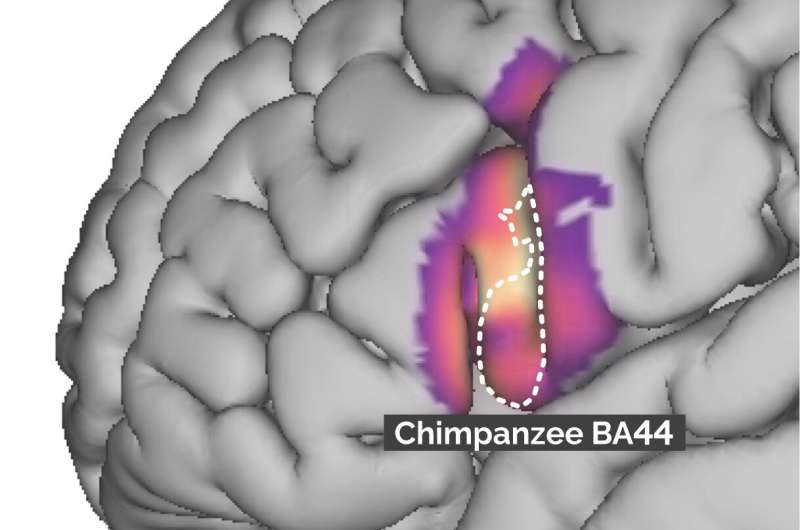This article has been reviewed according to Science X's editorial process and policies. Editors have highlighted the following attributes while ensuring the content's credibility:
fact-checked
peer-reviewed publication
trusted source
proofread
Scientists compare humans and chimpanzees to uncover evolution of language-relevant brain areas

Language is one aspect that makes us human. Other animals can learn words or calls and communicate, but the ability to generate an infinite number of utterances based on a small number of syntactic rules is unique to humans.
A team of researchers led by Angela Friederici from the Max Planck Institute for Human Cognitive and Brain Sciences (MPI CBS) in Leipzig, together with scientists from the Universities of Texas and Washington (U.S.), have now published a study in the journal PLOS Biology in which they directly compared the region in the human brain responsible for language with its homologous region in the chimpanzee brain using MRI data.
The study shows that the area responsible for syntactic processes in humans is the result of a large expansion in the left hemisphere. Such expansion of Broca's area in the brain during the course of evolution could be the root of humans' ability to speak.
Human linguistic ability is based on the ability to apply syntactic rules. They determine the way words are combined to form phrases and sentences. In the human brain, the construction of syntactic structures is supported by a sub-region of the Broca's area in the frontal lobe (inferior frontal cortex). Angela Friederici, Director at MPI CBS, and Guillermo Gallardo from her team, together with colleagues from the U.S., have now mapped the neuroanatomical details of Broca's region of both species to each other using state-of-the-art MRI technology.
Guillermo Gallardo, lead author of the study, describes the researchers' initial motivation: "Given the genetic and neuroanatomical similarity with our close living relatives, the chimpanzees, the crucial question was 'What is the biological basis driving our large differences in language ability?' Broca's area, an area which we share with chimpanzees and is responsible for syntax in the human brain, seemed like a good candidate to take a deeper look into."
To uncover the mystery of language formation, the researchers used advanced algorithms to precisely compare two areas defined by their tissue composition, called 44 and 45, covering Broca's region in the left and right hemispheres of the human and chimpanzee brain.
Friederici states, "It turned out that only area 44 in the left hemisphere was expanded in humans compared to chimpanzees. Interestingly, this is exactly the area known to be responsible for syntactic processes in humans. We now assume that during evolution, the expansion of a particular subpart of Broca's region, namely brain area 44, may be at the root of the language ability in humans."
More information: Guillermo Gallardo et al, Morphological evolution of language-relevant brain areas, PLOS Biology (2023). DOI: 10.1371/journal.pbio.3002266
Journal information: PLoS Biology
Provided by Max Planck Society





















